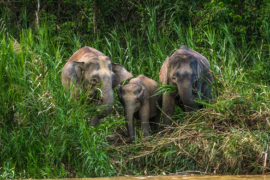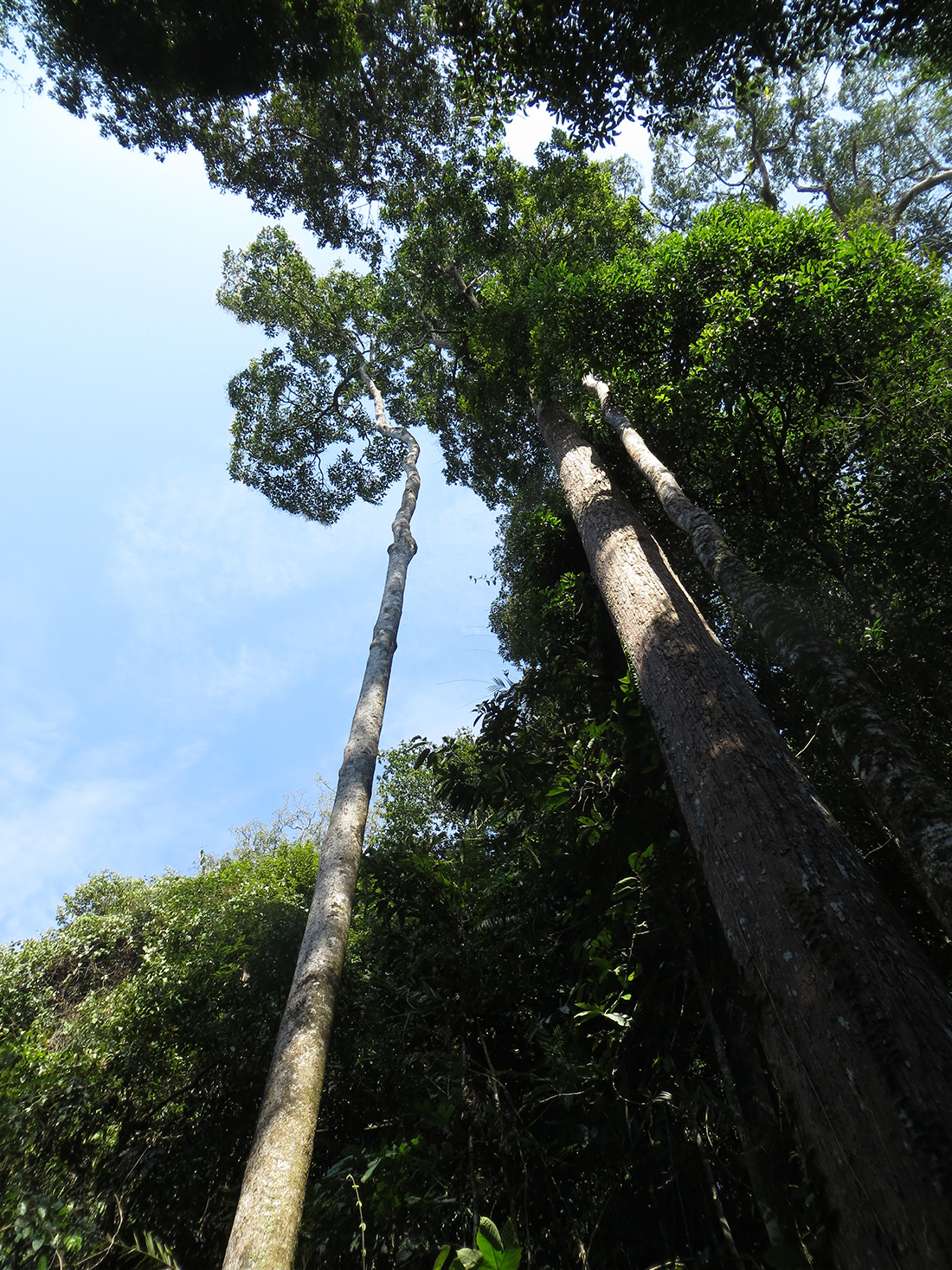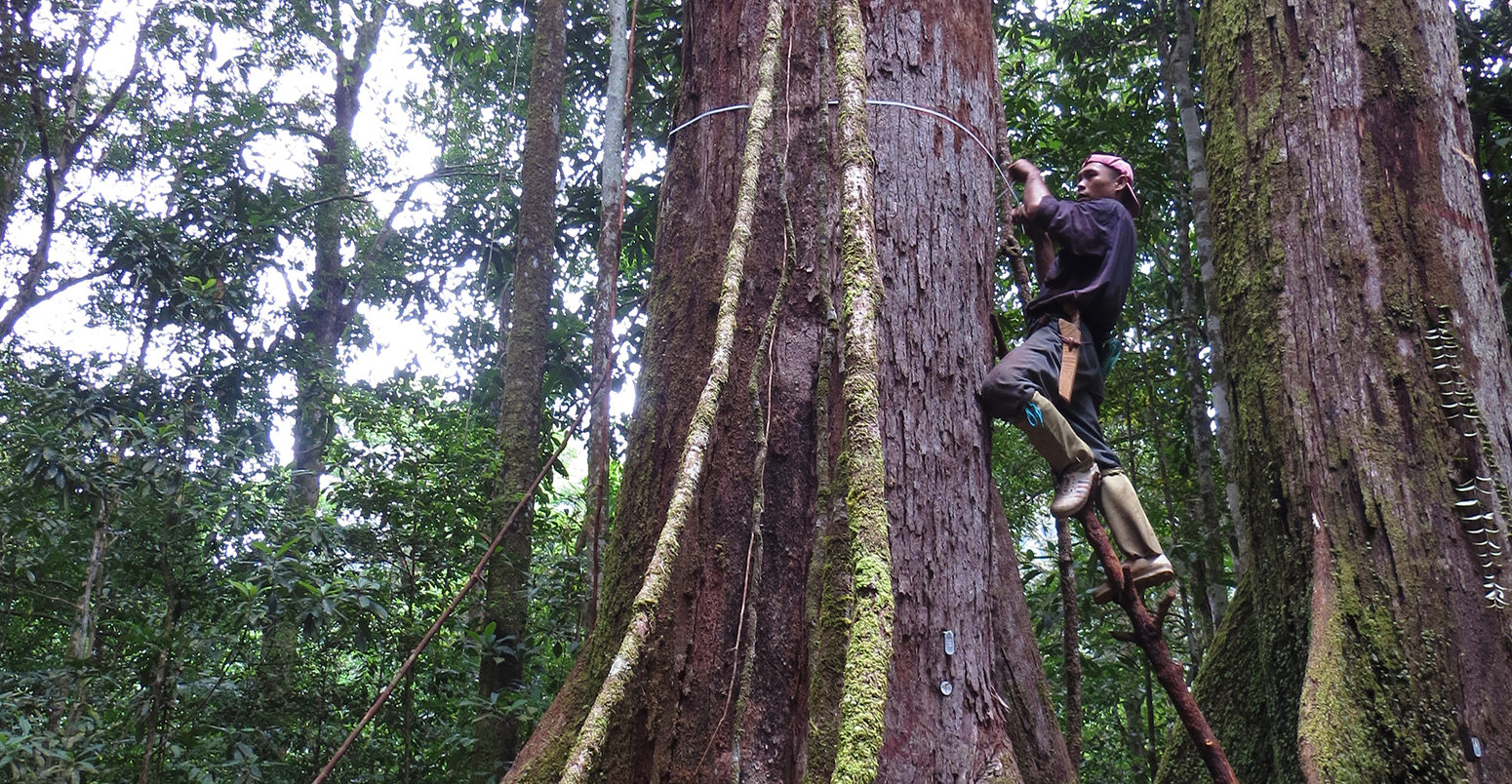
Deforestation and drought threaten carbon storage in Borneo’s rainforests
Daisy Dunne
12.19.17Daisy Dunne
19.12.2017 | 4:00pmCarbon storage in Borneo’s tropical rainforests faces a dual threat from deforestation for agriculture and droughts caused by El Niño events, a new study finds.
Despite these challenges, the remaining forests on the Indonesian island of Borneo have acted as a net carbon sink over the past five decades, the lead author tells Carbon Brief. This means they have removed more CO2 from the atmosphere than they released through natural processes.
The findings add “critical data to a broader picture” of how the world’s tropical forests help to tackle climate change by removing CO2 from the atmosphere, a co-author tells Carbon Brief.
Preserving Borneo’s diminishing forests – along with rainforests in Africa and the Amazon – could also play a vital role in limiting global warming to well below 2C, he adds.
Borneo’s changing face
The tropical forests of Borneo are home to one of the most diverse group of animals and plants in the world. The island supports dozens of species that can’t be found anywhere else, including the pygmy elephant, the Bornean orangutan and the proboscis monkey.
This diverse range of animals find shelter and food within Borneo’s rainforests, which are made up of some of the tallest and most carbon-dense trees across the globe.
However, much of Borneo’s lush forest has been lost in recent decades. Between 1973 and 2015, around 45% of Borneo’s forest was cut down, mostly for timber and to clear land for palm oil plantations.
You can see the extent of this deforestation on a map of the island below. Dark green shows the location of remaining forest in 2010 and light green shows where forest has been cleared. Orange squares represent data collection sites in the study.
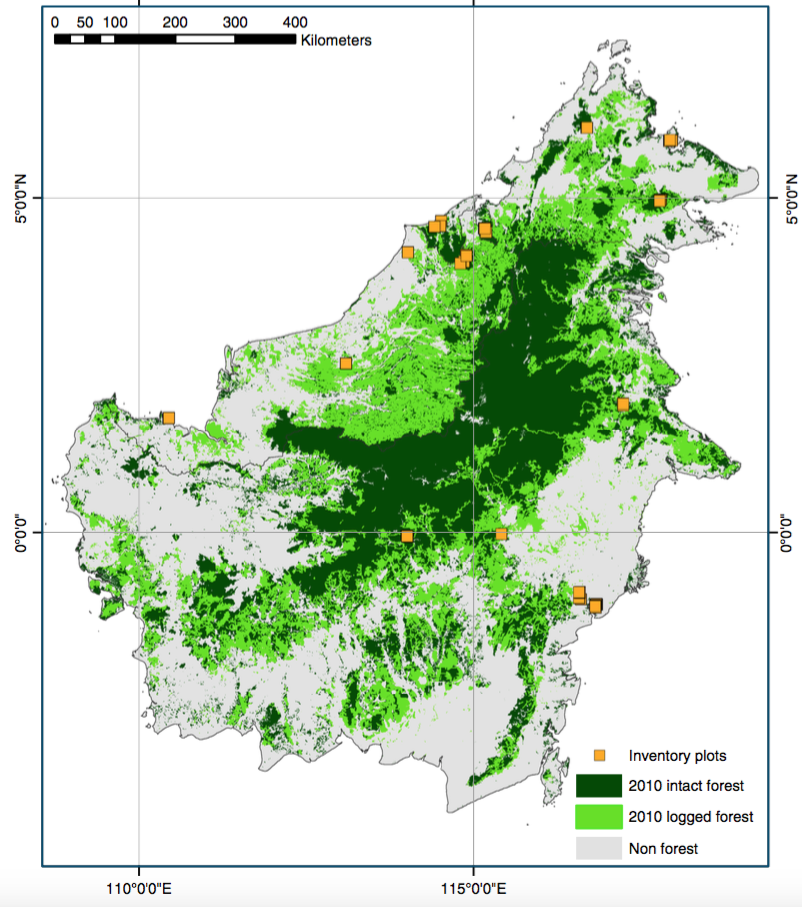
Map showing forest cover in Borneo in 2010. Dark green represents undisturbed forest, while light green shows where forest has been removed. Orange squares represent data collection sites. Source: Qie et al. (2017) Data source: Gaveau et al. 2014
The new study, published in Nature Communications, is the first to estimate how much carbon is being stored by parts of the forest that have not been targeted by deforestation.
To do this, researchers collected new measurements of tens of thousands of trees in more than 70 long-term forest plots which have been monitored as early as 1958 –to calculate how much biomass Borneo’s forests stored from one year to the next.
They found that, between 1960 and 2010, Borneo’s undisturbed forests acted as a net carbon sink, meaning that they stored more carbon in their trunks and leaves than they emitted through natural processes such as respiration.
This result provides the “missing evidence” to show that the world’s tropical forests work together to absorb large stores of carbon from the atmosphere, says lead author Dr Lan Qie, a researcher at the University of Leeds. She tells Carbon Brief:
“These results closely match those from African and Amazonian plot networks, suggesting that the world’s remaining intact tropical forests are all acting as carbon sinks – absorbing more carbon than they are releasing.”
(It’s worth noting that a study published in Science earlier this year found that, if tropical forests that have been affected by deforestation and land degradation are also taken into consideration, it’s possible that the world’s forests have become a net emitter of CO2.)
The island’s forests acted as a carbon sink over this period, increasing their carbon storage by 430kg of carbon a year per hectare of forest. In 2010, there were around 21m hectares of intact forest remaining in Borneo. (Approximately 18m hectares have already been cleared.)
The research explains how natural factors and nearby human activity can affect carbon storage in Borneo’s rainforests, says Qie:
“The new study also reports on two threats to continued carbon uptake by Bornean forests: droughts and the influence of nearby areas where forests are cleared.”
Damaging drought
Every five years or so, a change in the winds causes a shift to warmer than normal sea surface temperatures in the equatorial Pacific Ocean – known as El Niño.
This natural phenomenon has varying impacts in different parts of the world. In Borneo, which sits between the Indian and Pacific Ocean, years of extreme El Niño can bring about an increased risk of drought.
A lack of rainfall caused by drought can lead to sudden and widespread tree death in tropical rainforests. On top of this, drought can cause large swathes of the canopy to “dry out”, which can have long term consequences for forest recovery.
When trees die, some of the carbon stored within their leaves and wood is released back into the atmosphere. The researchers found that, during the 1997-8 El Niño drought, such a large amount of carbon was lost from dying trees that Borneo’s forests temporarily turned into a carbon source, meaning that they emitted more carbon than they were able to absorb.
Although El Niño is a natural event, research suggests that climate change could make “extreme” events more frequent. This could pose an additional threat to Borneo’s forests, says Qie:
“Climate models suggest future droughts will become more severe [under global warming], which may impact the carbon uptake capability of rainforests across the globe.”
Human fingerprint
There are laws in place to protect forests in parts of Indonesia, including Borneo. However, NGOs including Greenpeace have recently raised concerns about how corruption and corporate interests could be blocking progress with forest conservation.
At present, around half of forest land on Borneo are considered to be “intact”. However, even this land is vulnerable to nearby human activity, the research finds.
This is down to a phenomenon known as the “edge effect”, which describes changes to ecosystems that exist close to a boundary between habitats.
For example, in Borneo, undisturbed forest lying close to a logging site or palm oil plantation is less biologically diverse than undisturbed forest located many miles away from a boundary.
The research finds that, on top of being less diverse, these forest edges are also less able to store carbon. In fact, forests within 500 metres of a boundary lines act as a carbon source, meaning they emit more carbon than they are able to absorb.
This is shown on the chart below, where annual change in above-ground biomass (a measure of carbon storage) declines markedly near the forest edge. At around 500m, above-ground biomass change quickly becomes negative, showing that this area of the forest is releasing more carbon than it is absorbing.
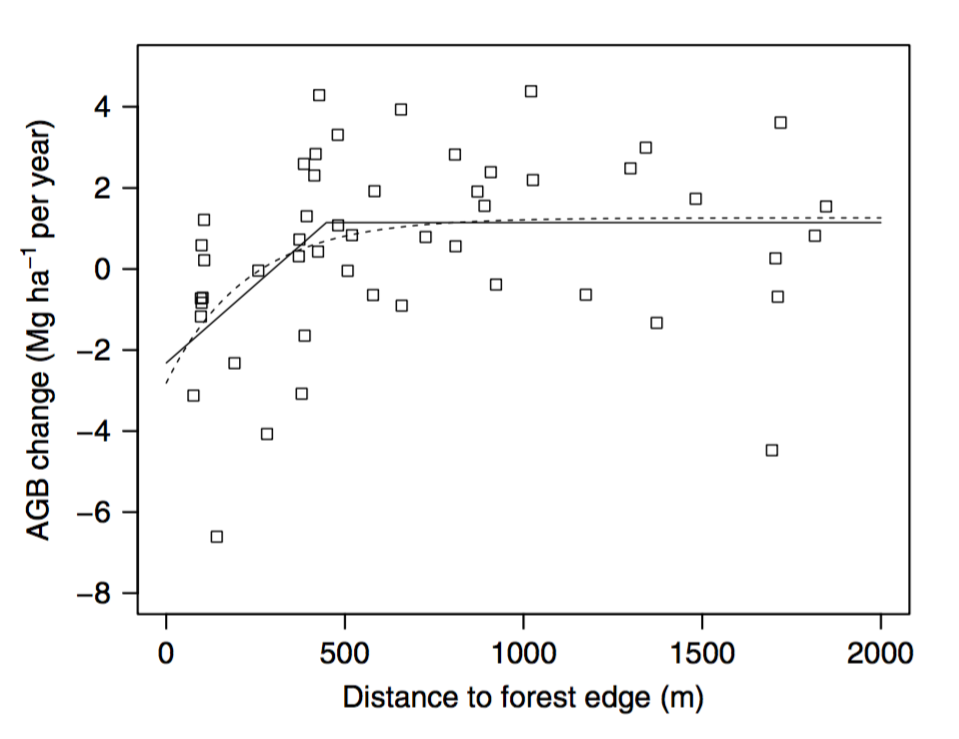
Above-ground biomass change in intact forests in Borneo from 0-200m from a forest edge. Each plot represents the result from one field site. Source: Qie et al. (2017)
Forest located close to a boundary between habitats releases more carbon than other parts because these regions experience a higher rate of tree death, explains Qie:
“We observed elevated tree mortality close to forest edge, likely due to increased disturbance, and edge-affected forests underwent a shift towards lower wood density species, hence storing less carbon.
“We suspect that additional tree falls and seed input from nearby disturbed areas have led to a greater probability of lower wood density species, leading to the patterns we see.”
Forest forecast
The findings suggest that any further deforestation or fragmentation of existing forests could have far-reaching effects on carbon storage, Qie says:
“[Policymakers should] preserve larger areas of continuous forest, and protect against further fragmentation, in order to maintain the important forest carbon sink service.”
The study also adds “critical data to a broader picture” of how the world’s tropical forests help to tackle climate change by removing CO2 from the atmosphere, says Prof Simon Lewis, a researcher from the University of Leeds and University College London who also contributed to the new research. He tells Carbon Brief:
“The good news is that undisturbed tropical forests are providing a free service to humanity, absorbing globally significant quantities of carbon, slowing the rate of climate change.
“The bad news is this situation probably will not last indefinitely. Given that the shifts in these forests are subtle and so cannot be detected from satellites, it is essential that these on-the-ground monitoring networks continue. If the tropical forest carbon sink turns off or goes into reverse, then the remaining carbon budget to limit warming to 2C under the Paris Agreement will need revision.”
Qie, L. et al. (2027) Long-term carbon sink in Borneo’s forests halted by drought and vulnerable to edge effects, Nature Communications, http://nature.com/articles/doi:10.1038/s41467-017-01997-0
-
Deforestation and drought threaten carbon storage in Borneo’s rainforests






